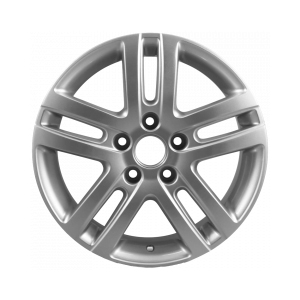radial oil seal
Understanding Radial Oil Seals Essential Components for Fluid Containment
Radial oil seals, commonly referred to simply as oil seals, are critical components in various mechanical systems, particularly in automotive and industrial applications. These seals are designed to prevent the leakage of lubricants, such as oil or grease, from rotating shafts, while also keeping contaminants like dirt and moisture from entering the mechanism. Their design and function are vital in ensuring operational efficiency and longevity of machinery.
Structure and Materials
A typical radial oil seal consists of several key parts a flexible sealing lip, a metallic or non-metallic casing, and sometimes a spring. The sealing lip makes contact with the shaft, creating a barrier that retains lubricants and prevents the intrusion of impurities. The casing provides structural support and rigidity, while the spring, if present, helps maintain consistent contact pressure between the sealing lip and the shaft.
Radial oil seals are crafted from a variety of materials, including rubber compounds, elastomers, and plastics. The choice of material heavily depends on the operating environment, including factors such as temperature, pressure, and the type of fluid being sealed. Common materials include nitrile, fluorocarbon, and silicone, each offering different resistance to chemicals and temperature variations.
Functional Mechanism
The functionality of radial oil seals is based on a few principles of mechanics and fluid dynamics
. When a shaft rotates, it creates a dynamic environment where centrifugal forces can act on the fluid. The sealing lip, which is usually designed with a wedge shape, creates a hydrodynamic effect that prevents the lubricant from leaking out. Simultaneously, the pressure differential created by the operation of the machinery aids the sealing effect, with the external atmospheric pressure helping to keep contaminants at bay.Additionally, the design allows for the absorption of minor shaft misalignments and vibrations, ensuring that the seal maintains effective contact without unnecessary wear. This adaptability is crucial as it prolongs the seal’s life and reduces maintenance downtime—a significant advantage for businesses relying on machinery for production.
radial oil seal

Applications
Radial oil seals are used across a wide array of applications, including automotive engines, gearboxes, tractors, and various industrial machinery. In vehicles, for instance, they play a crucial role in the engine and transmission systems, where effective sealing is necessary to contain oils and lubricants under challenging conditions, including high temperatures and pressures. Failure in sealing can lead to significant leaks, which not only reduce efficiency but can also lead to severe mechanical failures or environmental hazards.
In industrial settings, radial oil seals are vital in pumps, motors, and hydraulic machinery. Their capacity to seal under variable speeds and conditions makes them indispensable in maintaining optimal performance.
Importance of Choosing the Right Seal
Choosing the correct radial oil seal is essential for ensuring the effectiveness of the machinery. Factors such as the size of the shaft, the type of fluids involved, temperature ranges, and the specific application all play a role in selecting the appropriate seal. An incorrectly specified seal can lead to premature wear, leaks, and ultimately, system failures that could result in costly repairs.
Regular maintenance and inspection of radial oil seals are crucial. Over time, seals can wear due to exposure to heat, pressure, and environmental conditions. Detecting early signs of wear, such as fluid leaks or wear marks, can help prevent more severe issues and prolong the life of both seals and the machinery.
Conclusion
Radial oil seals might seem like small components in the vast landscape of mechanical engineering, but their importance is far-reaching. They play a vital role in the functionality, efficiency, and longevity of machinery across various sectors. Understanding their design, function, and maintenance can lead to better choices in equipment specification and management, ensuring smooth operations and minimized downtime. As technology evolves, so too do the materials and designs of radial oil seals, aiming to meet the increasing demands of modern machinery.
-
The Ultimate Guide to Car Repair Kits: Tools and Essentials Every Driver Should Own
News Aug.01,2025
-
The Complete Guide to Oil Pan Gaskets: Sealing Engine Leaks the Right Way
News Aug.01,2025
-
Preventing Oil Leaks: A Complete Guide to Oil Pan Gaskets and Drain Seals
News Aug.01,2025
-
Everything You Need to Know About Oil Pan Gaskets and Drain Plug Seals
News Aug.01,2025
-
Essential for Car Owners: How to Use a Car Repair Kit to Deal with Minor Breakdown
News Aug.01,2025
-
Comprehensive Guide to Engine Oil Sump Gaskets and Related Seals
News Aug.01,2025
-
The Ultimate Guide to Boat Propeller Bearings and Trailer Wheel Bearings
News Jul.31,2025
Products categories















